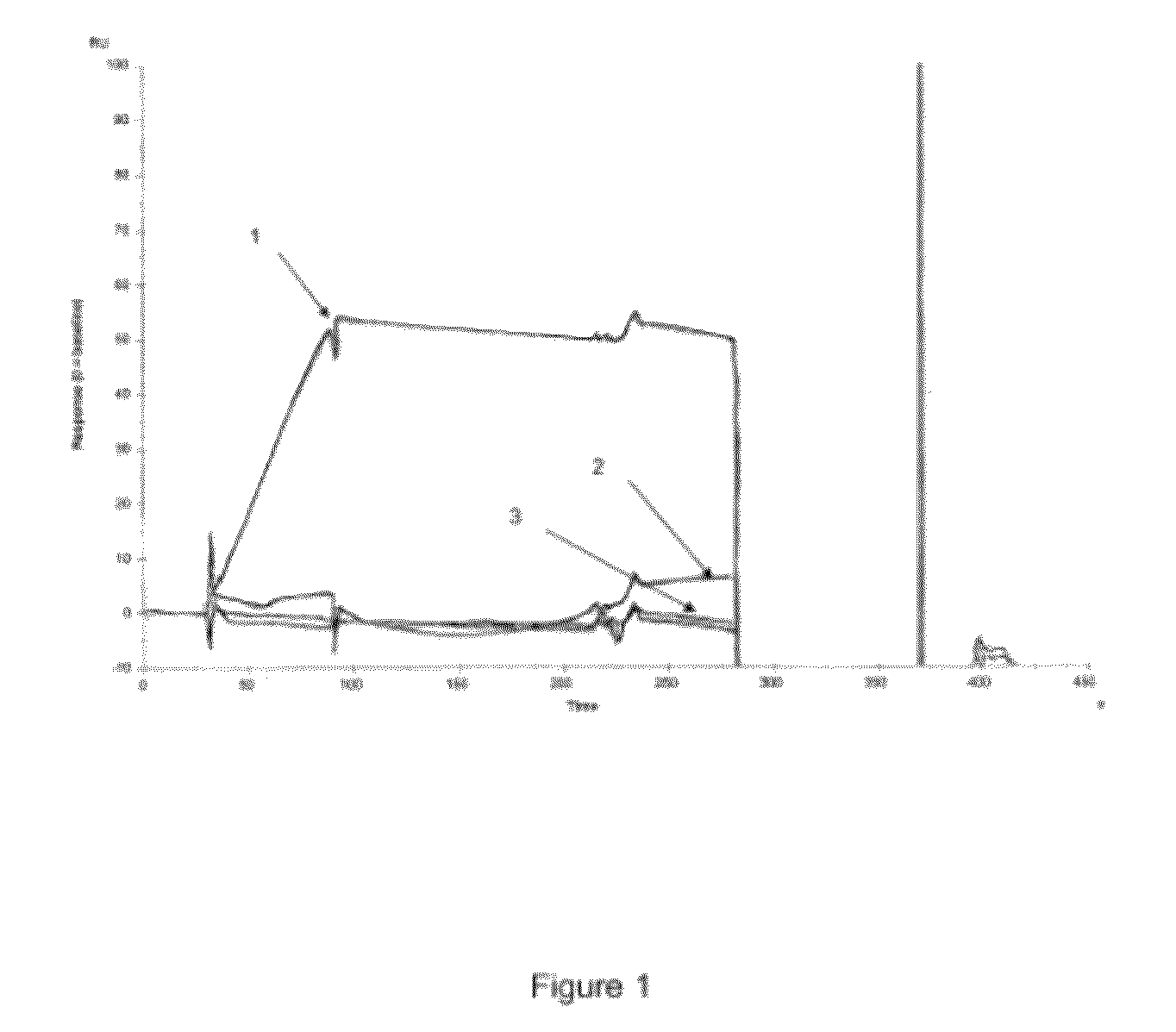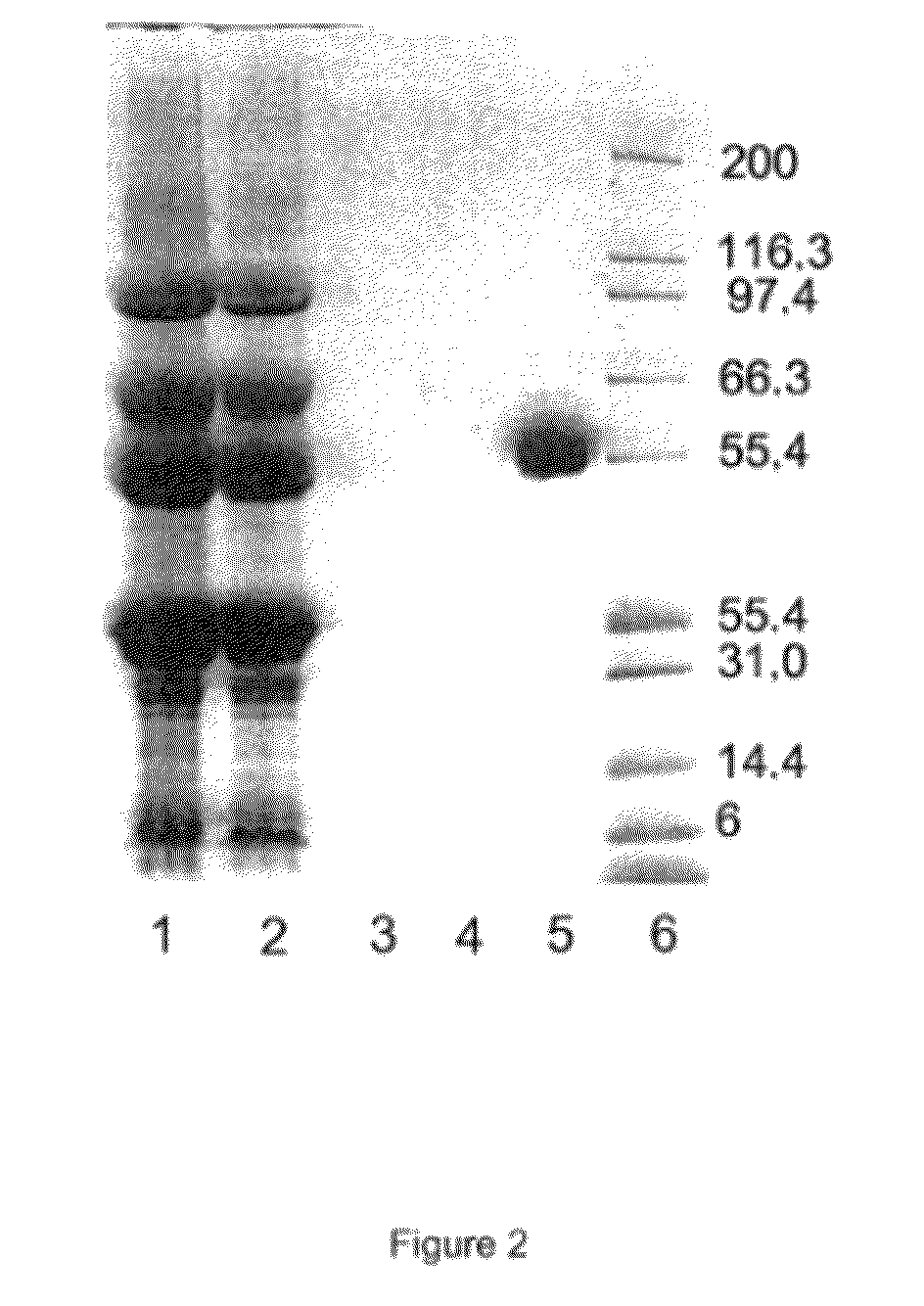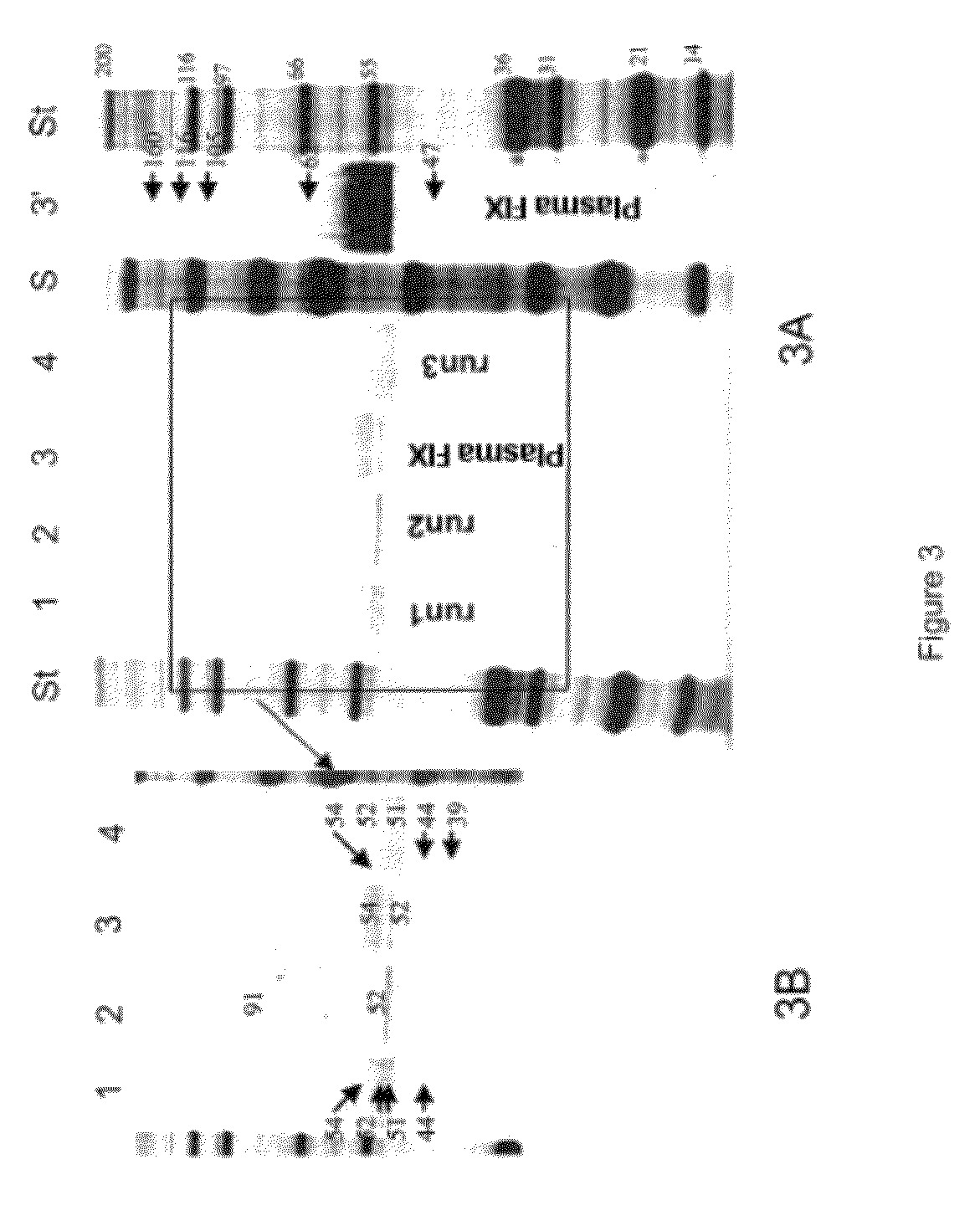Method for purifying active GLA-domain coagulation proteins
a technology of coagulation protein and purification method, which is applied in the field of protein purification, can solve problems such as immunogenicity problems in treated patients
- Summary
- Abstract
- Description
- Claims
- Application Information
AI Technical Summary
Benefits of technology
Problems solved by technology
Method used
Image
Examples
example 1
Preparation of an Affinity Support
[0430]The affinity support was made from a solid support material consisting of a matrix onto which streptavidin (streptavidin-agarose—Novagen®) was grafted.
[0431]A volume of 1 ml of gel was introduced into a container consisting of a column (i.d. 11 mm). The gel was washed with purified water in order to remove the storage solvent.
The Gel Characteristics are:
[0432]Biotin adsorption capacity: ≧85 nanomol / ml of gel[0433]Functional test: Capture >99% of biotinylated thrombin in 30 minutes at AT[0434]Other tests: Protease-free, endo / exonuclease-free, RNase-free[0435]Preservative: 100 mM sodium phosphate, pH 7.5, +NaN3 0.02.
[0436]The output of the packed column (gel bed height=1 cm) is connected to a detector of UV absorbance at 254 nm and a recording device.
[0437]The biotinylated anti-GLA nucleic aptamers of sequence SEQ ID No. 4, also called “Mapt-1” aptamers in the present description, are solubilized in purified water at a final concentration of 0.5...
example 2
Purification of a Recombinant GLA-Domain Protein (Transgenic Human Factor IX)
[0442]An affinity support of the type described in example 1 was used to purify recombinant human factor IX produced in the milk of pigs transgenic for human Factor IX.
A. Protocol for Purifying by Affinity Chromatography
[0443]The characteristics for implementing the step of affinity chromatography of the starting sample on an affinity support on which the Mapt-1 anti-GLA aptamers are immobilized are described in the tables below.
Step 1: Clarification
[0444]Clarification with citrate to obtain clarified milk at pH 7.5 at a final concentration of 0.25M of citrate buffer.
Step 2: MEP hypercel
SM: clarified milk (IBF 25-10 ml of gel)
FIX loading: 243 IU / ml of gel
Equilibration buffer: 0.25M citrate, pH 7.5
Elution buffer: water
Step 3: Dialysis
SM: MEP eluate
Dialysis buffer: 50 mM Tris-50 mM NaCl, pH 7.5
Step 4: MAPT-1 (3 run)
SM: Dialyzed MEP eluate (IBF 1.1-1 ml of gel)
FIX loading: 230 IU / ml of gel
Equilibration buffer:...
example 3
Purification of a GLA-Domain Protein with a Correctly Gamma-Carboxylated GLA Domain
[0504]In example 3, tests were carried out in particular for purifying a GLA protein with a correctly gamma-carboxylated GLA domain, from a starting sample comprising a mixture of different forms of the same GLA-domain protein, respectively forms in which the GLA domain is correctly gamma-carboxylated and forms in which the GLA domain is incorrectly gamma-carboxylated.
[0505]More specifically, tests were carried out for purifying recombinant Factor IX produced in the milk of pigs transgenic for human Factor IX. The milk of the transgenic pigs comprises a mixture of (i) active transgenic recombinant human Factor IX with a correctly gamma-carboxylated GLA domain and (ii) inactive transgenic recombinant human Factor IX with an incorrectly gamma-carboxylated GLA domain.
[0506]The results of these tests are given below.
4.1. Selective Binding of Mapt-1 to GLA Proteins with a Correctly Gamma-Carboxylated GLA D...
PUM
| Property | Measurement | Unit |
|---|---|---|
| ionic strength | aaaaa | aaaaa |
| pH | aaaaa | aaaaa |
| temperature | aaaaa | aaaaa |
Abstract
Description
Claims
Application Information
 Login to View More
Login to View More - R&D
- Intellectual Property
- Life Sciences
- Materials
- Tech Scout
- Unparalleled Data Quality
- Higher Quality Content
- 60% Fewer Hallucinations
Browse by: Latest US Patents, China's latest patents, Technical Efficacy Thesaurus, Application Domain, Technology Topic, Popular Technical Reports.
© 2025 PatSnap. All rights reserved.Legal|Privacy policy|Modern Slavery Act Transparency Statement|Sitemap|About US| Contact US: help@patsnap.com



